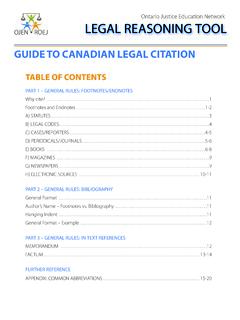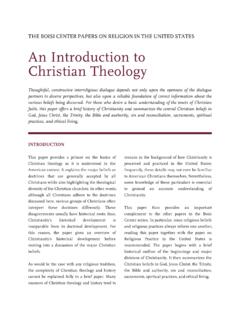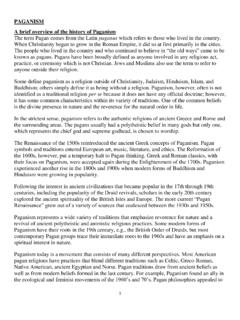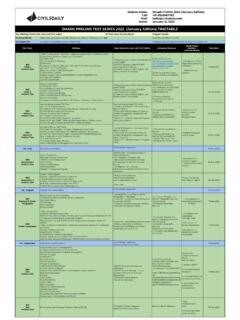Transcription of HOW TO WRITE A CASE BRIEF - OJEN
1 2013 WHAT IS A case BRIEF ?A case BRIEF is a written summary of a legal decision. It outlines the facts, history, issues, outcome and reasoning of a particular ARE case BRIEFS HELPFUL? case briefs are useful because they: Identify the most important aspects of a case , making it easier to synthesize the information; Outline the legal principles and rules that were established in a case ; Put cases in context with other material learned in a course; and Are a great study tool. WHAT IS INCLUDED IN A case BRIEF ?1. Who was involved in the case ?
2 [ case name and citation]2. What happened in the case ? [facts]3. Which courts have heard the case already? [procedural history]4. What are the legal issues the court must decide? [issues]5. How did the judge decide the case ? [decision]6. What legal principle does this decision stand for? [the ratio]7. What is the explanation the court gave for its decision? [reasons]OVERVIEW OF A case BRIEFCASE NAME AND CITATION1 Also referred to as the style of cause , this section identifies the parties involved in the case . For example:R v Patrick, 2009 SCC 17, [2009] 1 SCR 579.
3 FAC TSThis section provides an overview of the most important facts of the case , including all of the relevant people, actions, locations and objects involved. Only the material facts of the case ( the facts that really matter to the outcome) need to be included. The goal is to tell the story of the case without forgetting something important or including something irrelevant. When outlining the facts of the case , be sure to include the titles of the people being written about. For example: Police suspected the appellant, Mr. Patrick, of operating an ecstasy lab in his home, and on several occasions, seized garbage bags that had been left at the rear edge of his property for city garbage pickup.
4 Police did not set foot on the appellant s property, but did reach through the airspace over his property line in order to seize the bags. Police used items in the bag, some of which were contaminated with ecstasy, to acquire a search warrant of the appellant s property and to charge him. The appellant argued that police 1 For further information, refer to OJEN s Guide to Legal Citation for High School Student. Ontario Justice Education NetworkLEGAL REASONING TOOLHOW TO WRITE A case 2013 violated his right under s. 8 of the Canadian Charter of Rights and Freedoms by searching his garbage.
5 At trial, it was found that the appellant did not have a reasonable expectation of privacy over his discarded garbage bags, making their search and seizure a lawful exercise of police powers. The trial judge therefore admitted the seized evidence and convicted the appellant of unlawfully producing, possessing and trafficking in a controlled substance. PROCEDURAL HISTORY This section should explain how the case has moved through the court system, starting from the time the matter went to trial to the present decision. The procedural history should include the following information: The original trial decision [often the trial is the first level, but sometimes there are steps before]; The court level of the decision made before this trial [what court was the case previously heard in?]
6 ]; and The current status of the case being reviewed ( what court is the case at now?)For example: The trial Court convicted Mr. Patrick of unlawfully producing, possessing and trafficking a controlled substance and the Court of Appeal for Alberta upheld the conviction. Mr. Patrick appealed this decision to the Supreme Court of section outlines the main legal questions that the court was asked to decide. The legal issues can be written in question form and should summarize what legal questions are being addressed by the case . It is often helpful to WRITE the questions in yes/no format.
7 For example: Was the warrantless search and seizure of garbage bags from the appellant s property a lawful exercise of police powers in accordance with s. 8 of the Canadian Charter of Rights and Freedoms?Or in an appeal caseAppeal dismissed; conviction upheld. WHO S WHO IN COURTF irst trial in civil court: Plaintiff (the party is bringing a claim) Defendant (the party accused of wrongdoing)First trial in criminal court: Crown (the government) Accused/Defendant (the party accused of a crime)In the case of an appeal trial: Appellant (the party who is bringing the appeal) Respondant (the party who won the previous trial and is now responding to the appeal)Ontario Justice Education NetworkHOW TO WRITE A case 2013 DECISIONThe decision section outlines what the Court decided and what action or remedy was ordered, if any.
8 This section provides the answers to the questions outlined in the Issues section. For example: The evidence from the garbage bags was admitted and Mr. Patrick was in an appeal caseAppeal dismissed; conviction upheld. R AT I OThe ratio (or ratio decidendi) is a statement of the legal rule that the Court used to make its decision. The ratio identifies what is important about a case from a legal perspective and also what effect it might have on society. Outlining the ratio is important because in a common law system like Canada s, the legal precedents set by the Supreme Court of Canada are binding on lower courts and will therefore influence how they decide similar cases.
9 The ratio should be written as a example: There is no reasonable expectation of privacy over garbage left out for collection on personal property such that a person s s. 8 rights to privacy under the Canadian Charter of Rights and Freedoms is activated or infringed by police search and section provides an explanation of how the Court reached its decision, including the legal rules or precedents it followed and how it justified its application of the law in this particular For example: The Court indicated that at issue was whether the appellant retained a reasonable expectation of privacy in the contents of his garbage.
10 The majority found that the appellant had abandoned his privacy interest by leaving his garbage bags out for collection at the edge of his property. The Court indicated that placement of the bags was key, as it suggested that bags placed nearer to the house might have been protected by s. 8 of the Charter, while bags left just inside the property line (unprotected from passersby) were a concurring judgment, Justice Abella held that the appellant retained a privacy interest in his garbage bags, as the waste was left out for the specific purpose of garbage collection.









